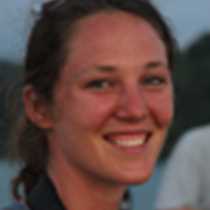Panama Bay Islands & the Panama Canal
Upon setting sail from Coiba Island yesterday afternoon, the National Geographic Sea Lion traveled 190 nautical miles around the Azuero Penisula and into the Gulf of Panama. Our destination for the morning was a small group of islands located within the large bay that are known for their nutrient-rich waters and bird life. It was a cool and breezy morning as we did our early stretches on the bridge deck and after breakfast we were loaded into the Zodiacs and headed out to explore the Bay Islands. The numerous species of birds, including blue and brown-footed boobies, pelicans, and magnificent frigate birds, inhabit these islands because of the high quantity of food that upwells from deeper ocean currents. We spent precious moments cruising around Bona Island watching and photographing the bird life and scanning the tall rock faces for other wildlife.
As lunch was served, we picked up anchor and headed north to the entrance of the Panama Canal. There we would await word from the Canal Authorities as to when our transit time for the Miraflores and Pedro Miguel locks would be. The Canal extends 50 miles from the Pacific Ocean to the port town of Colon on the Caribbean side and is an engineering masterpiece. Completed in 1914 by the United States, the Panama Canal is now owned and operated (since 2000) by the Panama Canal Authorities, an autonomous entity of the Panamanian government, and employs over 9,000 workers, mostly of whom are Panamanian.
As the sun was sinking toward the horizon, a Panamanian pilot came on board and we made our way to the first sets of locks that would lift us 90 feet above sea level and into the Culebra Cut. Cocktails and hors’ d’oeuvres were served on the sun deck and festive Latin American music played from the stereo. Cristian, our Panamanian naturalist, narrated from a microphone as we transited the narrow entrance of the Canal. As the light faded we crossed under the Bridge of the Americas, which was built in 1962 and rises almost 400 feet above the Canal. From there we slowly made our way toward the Miraflores Locks and eventually Gatun Lake where we will anchor for the night. Tomorrow we will complete our transit of the Panama Canal and sail into Caribbean waters!




